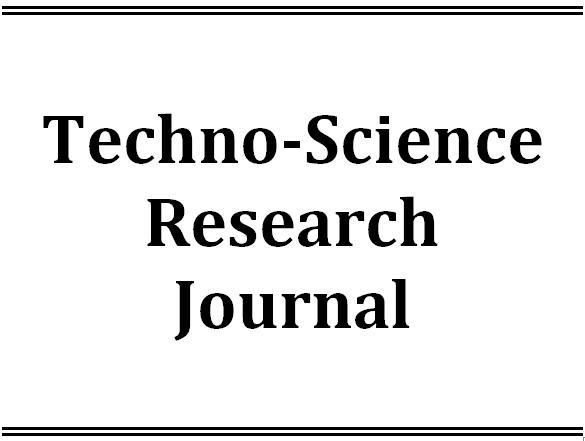Latest Issue
Empowering Education with Online Khmer Handwritten Text Recognition for Teaching and Learning Assistance
Published: August 30,2025Undergraduate Student Dropout Prediction with Class Balancing Techniques
Published: August 30,2025Status of Seawater Quality at Koh Rong Island, Sihanoukville, Cambodia
Published: August 30,2025Low-Complexity Detection of Primary Synchronization Signal for 5G New Radio Terrestrial Cellular System
Published: August 30,2025Word Spotting on Khmer Printed Documents
Published: August 30,2025Tuning Hyperparameters Learning Rate and Gamma in Gym Environment Inverted Pendulum
Published: August 30,2025Examining Passenger Loyalty in Phnom Penh Public Bus System: A Structural Equation Modelling Approach
Published: August 30,2025Prediction on Load model for future load profile of Electric Vehicle charging demand in Phnom Penh
Published: August 30,2025Economic Study on Integrating PV-DG with Grid-Tie: Case Study in Cambodia
Published: August 30,2025Optimization of White Pepper (Piper nigrum L.) Processing by Enzymatic Activity
-
1. ITC
Academic Editor:
Received: January 22,2024 / Revised: / Accepted: January 22,2024 / Available online: June 01,2020
White pepper (Piper nigrum L.) is commonly used in food products such as light-colored sauces, soups, salad dressing, and mayonnaise. In general, white pepper is produced by water retting that is known as traditional method. Therefore, this study focused on the optimization of white pepper processing from green pepper berries by pectinase enzyme. It was conducted in different pretreatment time (0, 5, 10 min), incubation at 40 °C for 16 hours and drying at 65 °C for 16 hours. The pH, temperature, concentration and ratio of enzyme was also optimized. The pectinase was chosen for this study due to its ability to decorate the green pepper berries skin. Drying kinetic, color measurement and bioactive compounds including total phenolic compound, essential oils, and piperine content were evaluated. The results showed that white pepper could be produced by enzymatic activity. The optimum condition of pectinase to produce white pepper was at the concentration of 700 ppm, incubation at 40 ºC with pH 3.5, and ratio 1:3 (w:v). White pepper that was produced by enzymatic activity provided a better color and shorten time of peeling and retained the bioactive compounds. The yield of white pepper was found about 27 to 28 %, it was higher than the one of white pepper produced from water retting. However, total phenolic content decreased more than 60 % after processing due to the skin removal while the piperine content and total essential oil remained stable.

